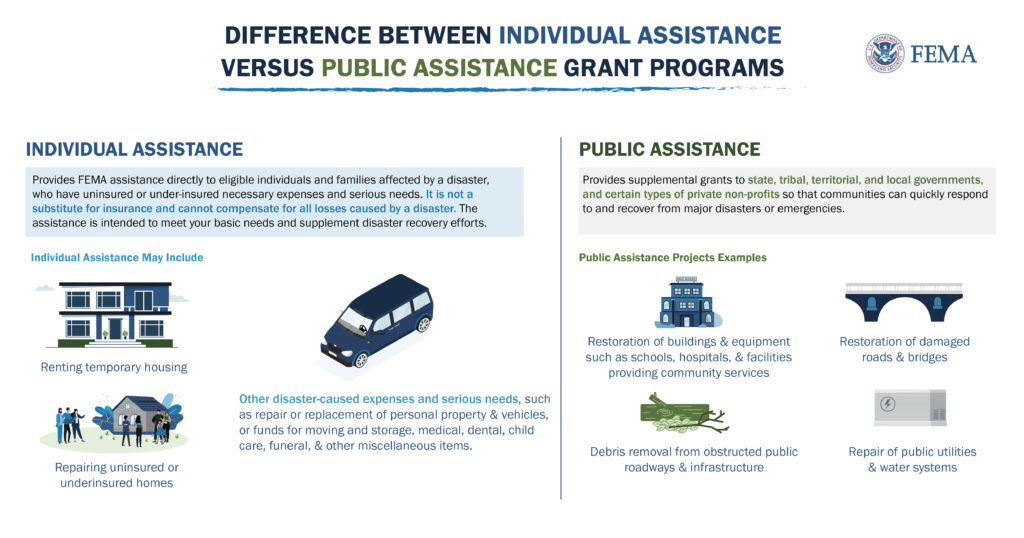Following a Presidential Major Disaster Declaration, the California Governor’s Office of Emergency Services (Cal OES) assists California communities that may have access to federal aid resources known as Individual Assistance and Public Assistance provided by the Federal Emergency Management Agency (FEMA).
Both types of assistance help California communities rebuild. However, resources are allocated differently depending on which type of assistance is available in a particular county.
What is Individual Assistance?
Individual Assistance provides assistance to individuals, households, businesses and agricultural communities affected by an emergency or disaster.
Homeowners, renters, business owners, individuals and families located in disaster declared counties may apply for federal Disaster Assistance during a designated application period to repair damaged homes, vehicles and personal property.
Disaster assistance may include grants to help pay for temporary housing to include rental and lodging expense, emergency home repairs, uninsured and underinsured personal property losses, and health and welfare needs caused by the disaster, along with other serious disaster-related expenses.
Low-interest disaster loans from the Small Business Administration (SBA) may be available for businesses of all sizes (including landlords), private non-profit organizations, homeowners and renters. Low-interest disaster loans help fund repairs or rebuilding efforts and cover the cost of replacing lost or disaster-damaged real estate and personal property. Economic Injury disaster loans are available to businesses and private nonprofits to assist with working capital needs as a direct result of the disaster.
What is Public Assistance?
Public Assistance can reimburse local governments for emergency work, protective measures, and debris removal. It also reimburses for repairs and/or replacement of disaster damaged public facilities and infrastructure.
Public facilities and infrastructure can include but are not limited to:
- Public Buildings: Libraries, Community Centers, City Halls, Schools, Information Centers, Government Buildings, Public Housing, etc …
- Other: Bridges, Highways, Roads, Railways, Telecommunications, etc …
Although funds are awarded to government entities and certain private nonprofits, the Public Assistance program is intended to benefit everyone – neighborhoods, cities, counties and states. Public Assistance dollars help clean up communities affected by disaster-related debris, repair roads and bridges, and put utilities and water systems back in order. 
